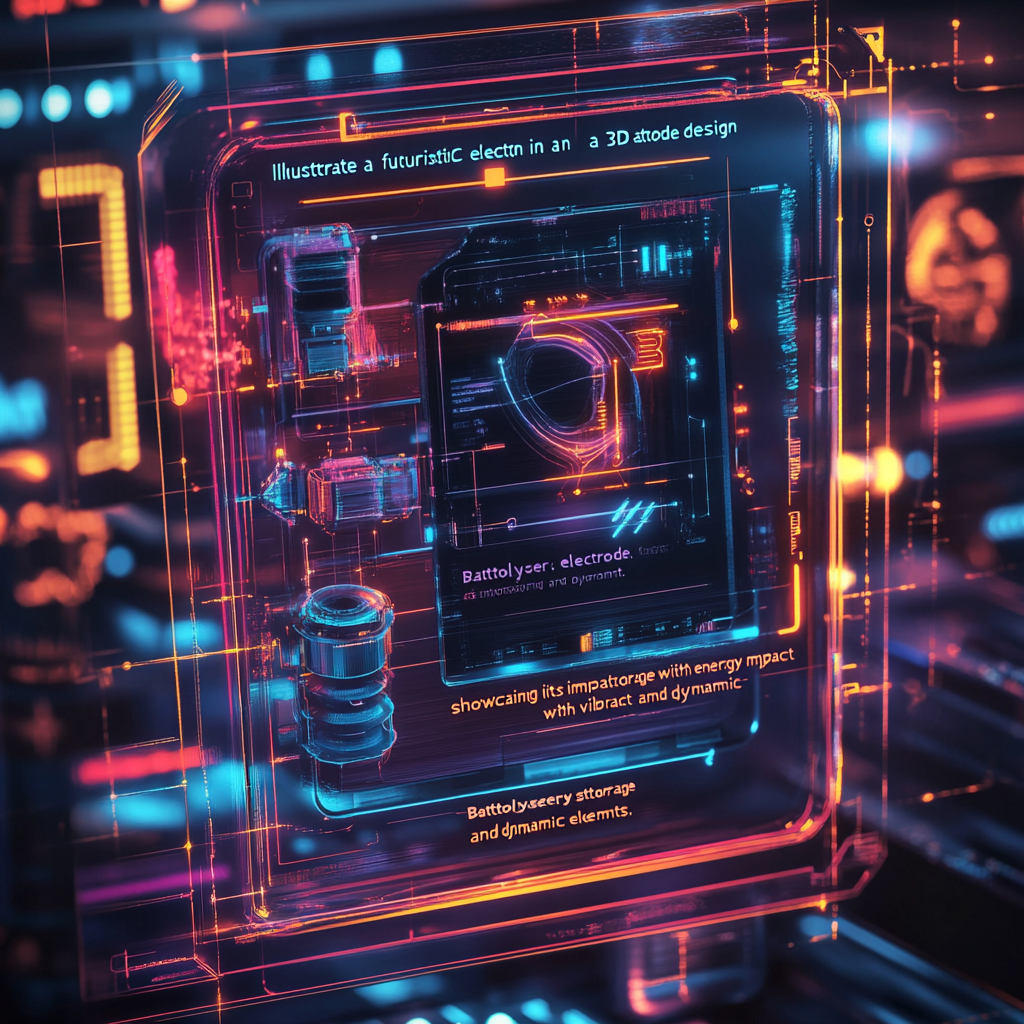
Revolutionary 3D Electrode Design: Quadruple Charge Speed!
When it comes to energy storage, we're talking about one of the biggest puzzles of our times—it's like trying to catch a cloud in a net. But wait, hold on to your thought as something revolutionary is making waves in the energy sector! Enter the enhanced 3D electrode design that's like the key to a high-tech treasure chest, unlocking the potential of the unmistakably nifty Battolyser. This invention isn’t just another entry on the tech roster; it's a robust hybrid battery and electrolyzer that can gulp electricity four times faster than you can say “sustainable energy.”
So, what's all the fuss about this curious little device? Let’s rewind to 2013 when Professor Fokko Mulder had the eureka moment to create a dual-function gadget. Fast forward to 2021, and Battolyser Systems took that idea from the lab bench and turned it into a tangible product. But don’t get too cozy yet, because the full picture reveals that this gadget is not just for the here and now; it's crucial for our energy transition. The Battolyser plays both sides of the field, serving as a battery for storing energy during the sun-kissed hours and changing hats to become an electrolyzer when it’s time to tuck energy away as hydrogen for the rainy days. It’s like having the best of both worlds!
Now let's dive into the meat of the matter—the enhanced 3D electrode design. Imagine, if you will, electrodes that are crafted with such precision that they boast channels for the electrolyte to stream through, almost like a water slide for energy particles. Researchers from Delft University of Technology, led by the savvy Robin Möller-Gulland, have cooked up a plan that not only ramps up conductivity but also doubles capacity. Yes, you heard that right; double-capped excitement!
With this new spark of ingenuity, the Battolyser can pull off sophisticated maneuvers—charging and producing hydrogen as quickly as its competitors, while skipping the pricey precious metals usually required. This is a game changer because we’re talking about achieving 82% of a full charge in a mere 18 minutes. Did someone say fast? Not to mention, it’s as if this device is throwing a party and only inviting a small guest list when it comes to costs—thanks to the increased efficiency allowing for a delightful 75% cut in material costs, meaning it can replace an electrolyzer spread over an area the size of 20 football pitches with a device that takes up hardly any room at all!
Let’s not ignore how beautifully this fits into the green energy landscape. The world has a bit of an energy seesaw, swinging between excess and shortage, usually hitting those peaks and valleys every four hours or so. The Battolyser stands at the ready, able to seamlessly flip between charging, producing hydrogen through electrolysis, and discharging energy when the curtain comes down. Other electrolyzers? They might as well be flipping burgers at a fast-food joint when it comes to responding to demands.
If you’re curious how it all clicks and whirrs, this new electrode design works wonders in quite a few ways. The clever channels boost conductivity, ensuring the electricity flows faster. As for gas removal during the electrolysis phase? Well, let’s just say the design enhances that process. And those expensive parts like membranes? They’re sitting out this dance as the design calls for fewer cells to achieve the same amount of electric storage.
And here's where things get even cooler! The innovation doesn’t stop at the Battolyser; other labs are putting their smartest brains together to create dazzling new 3D electrode technologies. Over at Lawrence Livermore National Laboratory, for instance, scientists have upped the ante by developing 3D-printed electrodes with intricate structures that allow for smoother ion-diffusion kinetics. We’re talking about the possibility of some serious supercharging for lithium-ion batteries and even supercapacitors—real high-octane action!
Then there’s the realm of graphene-enhanced electrodes. Now, if you think that sounds futuristic, you’re spot on! These sleek structures offer not just rapid charging capabilities but might also redefine what we think a high-performance energy storage device could be. They swoop in and tackle energy density and power density challenges like a ninja in the night!
As we look down the road, the enhanced 3D electrode design is shaping up to be a pivotal element in our quest for sustainable energy storage solutions. The world is riding the renewable energy wave, and innovations like the Battolyser along with its spectacular 3D electrodes are what we need to stay afloat in this sea of change.
So, dear reader, it’s time for a little reflective pause. The evolution of energy storage is zipping ahead like an eager racehorse, and those who stand still can miss the exciting finish line. Feel the pulse of innovation, grab your electric\nscepter, and immerse yourself in this landscape where science meets practicality.
If the journey of the Battolyser and its cutting-edge designs sparked your interest, don’t just stand there—instead, dive deeper! Want to stay up to date with the latest news on neural networks and automation? Subscribe to our Telegram channel: @channel_neirotoken. It's the perfect way to keep both your curiosity and your knowledge full!

